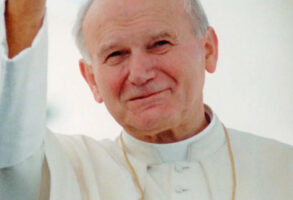Published April 6, 2015
In early March, after an intellectually bracing lunch with the Librarian of Congress, James H. Billington, the thought occurred that I was tired of writing eulogies, after their deaths, for great men I had been privileged to know, and that I should write something in praise of Jim Billington while he was still very much alive. Now that he has come under attack, I’m even more inclined to do some witnessing, as my evangelical friends would say, on his behalf.
I am certainly no expert on the IT-management situation at the Library of Congress, so I’ve nothing to say about the recent GAO report urging reforms in that part of the Library’s functioning. But the sly, and not so sly, personal attacks on Jim Billington that, in typical Washington fashion, have followed the GAO report demand a response. Yes, the Librarian of Congress is 85. So what? He has more ideas in a week than most of Washington has in a year. And his stewardship of one of the world’s great cultural treasures has been nothing short of exemplary — indeed, visionary. Truth to tell, there’s something supremely ironic that this attack on Billington should involve information technology, for it has been under Billington’s leadership, and because of his vision, that the Library of Congress has thrust itself into the digital age in a way that will benefit not only Americans, but the entire world, for decades, indeed centuries, to come.
I first knew Jim Billington in his role as director of the Woodrow Wilson International Center for Scholars, which was then housed in the old Smithsonian Castle on the Mall. Thanks in no small part to Jim and the late Max Kampelman, then the chairman of the Wilson Center’s board, I had been awarded a year’s fellowship at the center, and found myself amidst a potpourri of scholars from multiple disciplines and a variety of political perspectives. James Renwick, that great architectural copycat, had modeled the castle on a medieval Norman monastery, and there was no doubt, even among the numerous large egos in our little monastic community in 1984–85, who the abbot was: It was Jim Billington. And not simply because of his mastery of his own discipline — Russian history and culture — and the breadth of his learning, but also because he had the striking ability, found primarily among master-teachers, to walk into any seminar or conversation, listen carefully, and then ask the one sharp, pregnant question that got everyone, including the most ideologically hardened academics, thinking about the matter at hand in a fresh, unbiased way.
It was because of that ability, and his taste for bringing to the Wilson Center men and women who didn’t fit the normal profile of the “distinguished academic,” that the nation’s official memorial to its only professor-president became, under Jim Billington’s intellectual leadership, a genuine community of conversation and a place where new ideas were brewed, as distinguished from old shibboleths’ being recycled.
One evening during my sabbatical there — March 10, 1985, to be precise — the Wilson Center hosted a dinner for a visiting Soviet delegation, and Billington (knowing my interest in religious-freedom issues behind the Iron Curtain and expecting, correctly, that I would prod our guests on that subject) invited me to be one of the Wilson Center fellows spread through the dozen or so tables of Soviet academics and Washington grandees. Somewhere between the main course and the dessert, the entire Soviet delegation got up and left, heading for the buses that would take them en masse back to the Soviet embassy on Mt. Alto. No one knew what had happened, so several of us walked out of the Castle to see if we could find out from our guests what was afoot.
It turned out that Premier Konstantin Chernenko had just dropped dead, and the Soviet delegation was being hustled back to the gated embassy compound on Mt. Alto, so that no one could say anything before the official line had been received from Moscow. It was all very strange, if entirely typical, and the next morning I walked into Jim Billington’s office and asked him what he thought Chernenko’s successor, Mikhail Gorbachev, would mean. Jim said that, whatever else could be said about Gorbachev, his formative political experience had not been the purge trials of the late 1930s, as was the case for Brezhnev, Andropov, and Chernenko — all of whom had, if I remember Billington’s image correctly, that “reptilian” look in their eyes. That’s what happened to you, he suggested, when most of your friends were shot in the back of the head in the Lubyanka at the behest of men like Stalin, Beria, and Vyshinsky: You became a kind of cold-blooded creature, and your politics followed in due course. Gorbachev had not lived through that experience, so he would be different.
Little wonder that a man of such insight should have become the personal tutor in Russian affairs to several generations of members of the House and the Senate, whom he accompanied on congressional visits to the USSR and then to post-Soviet Russia.
In addition to bringing the Library of Congress — which the British historian Sir Michael Howard once described to me as the greatest collection of human knowledge on earth — into the digital age, Jim Billington has also worked, quietly but effectively, to challenge the stultifying secularism that has befogged American intellectual life for far too long. Thus a major 1993 exhibit at the LOC, “Rome Reborn: The Vatican Library and Renaissance Culture,” demonstrated that Christian conviction and scholarship had played a significant role in the vast explosion of learning and art that took place during a period more typically presented as having been motored by secularist passions. Or, as Billington noted in his preface to the exhibit catalogue, the Biblioteca Apostolica Vaticana “consciously pursued an acquisitions policy that focused upon the liberal arts and sciences” because of “the conscious determination of the Renaissance papacy to place knowledge systematically at the service of governance.” And here was a conviction with consequences. For, as Billington continued, the “heir to that tradition, Thomas Jefferson, assigned precisely the same function to the Library of Congress in the context of American democracy: to ground the world of public affairs in the world of learning.” Only a man with the breadth of culture and the ecumenical sensibility of Jim Billington, I suggest, could find the link between Pope Nicholas V, founder of the Vatican Library, and the Sage of Monticello, founder of the Library of Congress.
Then there was the 1998 exhibit “Religion and the Founding of the American Republic,” which demonstrated that those who founded and shaped the novus ordo seclorum of the United States were, in the main and like their constituents, believers who shared Tocqueville’s conviction that religious conviction was indispensable to republican self-governance. The thought occurs that that exhibit might usefully be remounted today.
At the Library of Congress, Jim Billington has been a builder as well as a curator. The LOC’s Kluge Center, one of Billington’s major initiatives, aims to replicate the experience of intellectual community I found at the old Wilson Center, bringing scholars together with public officials for conversations that dig far deeper than the usual Washington chatter and that push the boundaries of debate into previously unexplored areas. Then there is the LOC’s Kluge Prize for Achievement in the Study of Humanity, another Billington initiative that, by focusing on lifetime achievement in the humanities and social sciences, fills a gap in the world’s cursus honorum left by the Nobel prizes; that its first honorees were such outstanding humanists as Leszek Kołakowski, Jaroslav Pelikan, Paul Ricoeur, and John Hope Franklin ought to be a source of pride to all Americans. The Kluge Center and Prize are but two examples of the public-private partnerships that Jim Billington has fostered at the LOC; other initiatives include the James Madison Council, a private-sector support group for LOC work, and the creation of the Library’s National Audio-Visual Conservation Center by the Packard Humanities Institute.
My lunch conversation with the Librarian of Congress last month was largely focused on one of his latest passions, the World Digital Library, which seeks to use the resources of 21st-century technology to make the greatest treasures of the world’s greatest libraries available, cost-free, to . . . everyone. It’s an extraordinary ambition, which could have been imagined only by an exceptional man with a deep belief in the liberating power of truth. And its realization is well underway.
The American people, the world of learning, the U.S. Congress, and truth-seekers throughout the world have been well served by James H. Billington since his swearing in as Librarian of Congress on September 14, 1987. It would be well for all concerned to keep that fundamental fact in mind at this moment.
— George Weigel is Distinguished Senior Fellow of Washington’s Ethics and Public Policy Center, where he holds the William E. Simon Chair in Catholic Studies.





